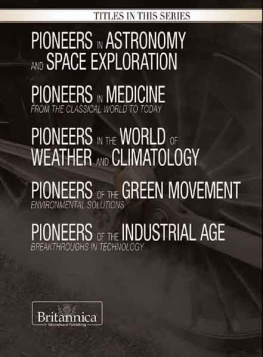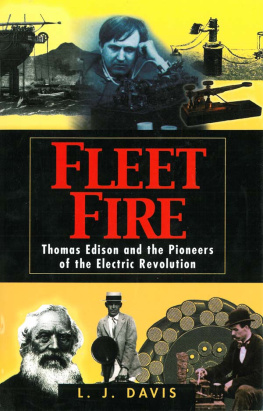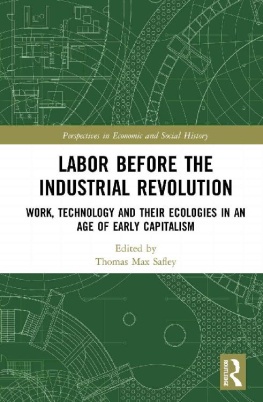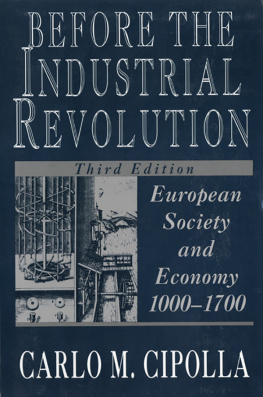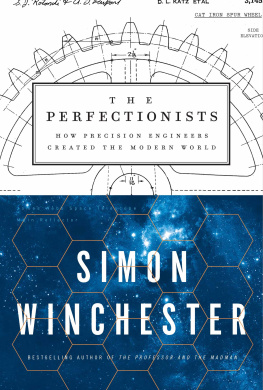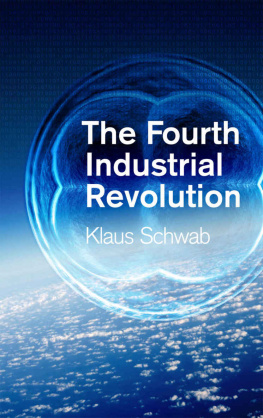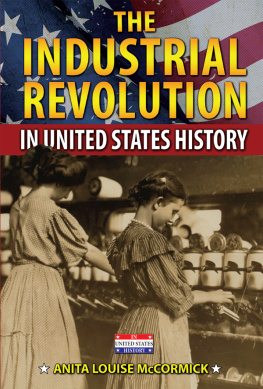PIONEERS OF THE INDUSTRIAL AGE
BREAKTHROUGHS IN TECHNOLOGY
INVENTORS AND INNOVATORS
PIONEERS OF THE INDUSTRIAL AGE
BREAKTHROUGHS IN TECHNOLOGY
EDITED BY SHERMAN HOLLAR

Published in 2013 by Britannica Educational Publishing
(a trademark of Encyclopdia Britannica, Inc.)
in association with Rosen Educational Services, LLC
29 East 21st Street, New York, NY 10010.
Copyright 2013 Encyclopdia Britannica, Inc. Britannica, Encyclopdia Britannica, and the Thistle logo are registered trademarks of Encyclopdia Britannica, Inc. All rights reserved.
Rosen Educational Services materials copyright 2013 Rosen Educational Services, LLC. All rights reserved.
Distributed exclusively by Rosen Educational Services.
For a listing of additional Britannica Educational Publishing titles, call toll free (800) 237-9932.
First Edition
Britannica Educational Publishing
J.E. Luebering: Director, Core Reference Group, Encyclopdia Britannica
Adam Augustyn: Assistant Manager, Encyclopdia Britannica
Anthony L. Green: Editor, Comptons by Britannica
Michael Anderson: Senior Editor, Comptons by Britannica
Andrea R. Field: Senior Editor, Comptons by Britannica
Sherman Hollar: Senior Editor, Comptons by Britannica
Marilyn L. Barton: Senior Coordinator, Production Control
Steven Bosco: Director, Editorial Technologies
Lisa S. Braucher: Senior Producer and Data Editor
Yvette Charboneau: Senior Copy Editor
Kathy Nakamura: Manager, Media Acquisition
Rosen Educational Services
Nicholas Croce: Rosen Editor
Nelson S: Art Director
Cindy Reiman: Photography Manager
Brian Garvey: Designer, Cover Design
Introduction by Nicholas Croce
Library of Congress Cataloging-in-Publication Data
Pioneers of the Industrial Age: breakthroughs in technology/edited by Sherman Hollar.1st ed.
p. cm.(Inventors and innovators)
In association with Britannica Educational Publishing, Rosen Educational Services.
Includes bibliographical references and index.
ISBN 978-1-61530-745-6 (eBook)
1. InventorsBiographyPopular works. 2. InventionsHistoryPopular works. I. Hollar, Sherman.
T39.P55 2013
609.22dc23
2012005541
Cover, p. 3 iStockphoto.com/Mark Goddard; interior background image iStockphoto.com/pialhovik
CONTENTS
INTRODUCTION

Orville and Wilbur Wrights first successful flight, on Dec. 17, 1903, at Kitty Hawk, NC. Library of Congress Prints and Photographs Division
T hough the Industrial Age began more than two centuries ago, we continue to benefit from it today. Every time one picks up an iPad, travels in an automobile, or text messages a friend, he or she can thank the pioneers of this transformative era in the history of invention, which created dramatic new means of production and brought about great technical advances in transportation and communication, among numerous other fields.
Many historians have come to view the process of industrialization as having occurred in two major periods: the First Industrial Revolution, which spanned from as early as 1760 to the mid-19th century, and the Second Industrial Revolution, which took place in the late 19th and 20th centuries. The First Industrial Revolution was mainly confined to Britain, Belgium, and France, while the Second Revolution witnessed the rise of other industrial powers, most notably the United States.
During these periods, nations transformed from largely agrarian economies to ones dominated by industry and machine manufacture. Technological changes included the use of new basic materials such as iron and steel and new energy sources such as coal, steam, electricity, and petroleum. These new technologies led to greater productivity, as in the example of the spinning jenny, a power loom created by English inventor James Hargreaves, which enabled workers to manufacture cloth with much greater efficiency.
Yet it wasnt just the technology itself but also manufacturing systems that increased productivity. The factory system allowed enterprises to better distribute tasks in the production process and to eliminate unnecessary work. In addition, developments in transportation technology, including the advent of steam-powered locomotives, steamships, automobiles, and airplanes, allowed for the mass distribution of the products that were created.
With new technologies and improved productivity came socioeconomic changes as well, including a wider distribution of wealth and increased international trade. The transition from an agrarian to an industrial society inspired the growth of cities and the working classes that inhabited them. The socioeconomic changes naturally fostered cultural shifts with workers abandoning the artisanal skills of the craftsman for those that involved operating machinery and working in a factory. Industrialization also brought about a psychological change as the increased capabilities of machines helped inspire a new confidence in societys ability to master nature by utilizing resources more efficiently.
This volume profiles some of the greatest innovators of the Industrial Age. Many are widely known for their contributions, such as Eli Whitney, inventor of the cotton gin; Samuel Morse, developer of the electric telegraph and Morse code; Alexander Graham Bell, the father of the electric telephone; Thomas Alva Edison, inventor of the phonograph and the incandescent lightbulb; and the Wright Brothers, pioneers of aviation. Others may not be as recognizable but they are no less influential. These include Guglielmo Marconi, inventor of a successful wireless telegraph; Edmund Cartwright, developer of the power loom for weaving; and Robert Fulton, the inventor who brought steamboating from the experimental stage to commercial success.
These pioneers, in their own way, helped forge the industrialized world and lay the foundation for the important breakthroughs to come.
CHAPTER 1
JOHN KAY
T he 18th-century English machinist and engineer John Kay invented the flying shuttle, which was an important step toward automatic weaving. This device, one of the first breakthroughs of the Industrial Revolution, transformed the textile industry.
Kay, the son of a wool manufacturer, was born near the town of Bury in Lancashire, Eng., on July 16, 1704. His father placed young John in charge of the family mill, and the youth took advantage of this opportunity by making several improvements to the mills machinery.
In 1733 Kay received a patent for a New Engine or Machine for Opening and Dressing Wool that used his ingenious flying shuttle. In previous looms, the shuttle was passed through the lengthwise, or warp, threads by hand, and wide fabrics required two weavers seated side by side passing the shuttle from left to right and then back again. Kay mounted the shuttle on wheels in a track and used paddles to shoot the shuttle from side to side when the weaver jerked a cord. Using a flying shuttle, one weaver could weave cloth of any width more quickly than two could before.

John Kay. Science & Society Picture Library/Getty Images
Wool manufacturers throughout Yorkshire quickly adopted the new invention, but they also organized a protective club to avoid paying Kay a royalty. Desperate to protect his patent, Kay spent most of his money on legal fees. He also faced a problem with weavers, who considered the flying shuttle a menace to labor and destroyed a model of the device. Kay moved to France and resumed his work, but he is said to have died in obscurity, probably in 1764. Kays invention so increased yarn consumption that it spurred the invention of spinning machines, but its true importance lay in its adaptation in power looms.
Next page
